
Every time I go to Great Dixter, I learn something new. And I gain even more appreciation about what this fantastic garden and the ethos of its gardeners have to offer.

This visit I spent a day volunteering and a day in the company of fellow bloggers being shown around the gardens by the very welcoming Great Dixter team. Above is deputy head gardener Siew Lee, explaining how mulch is added to the long border using a tickling fork. The soil and mulch are mixed together with the long-handled fork, so that self-seeded seeds don’t get buried under the mulch and are encouraged to germinate. Just one of the practices that Great Dixter employ that make this garden so special.

Head gardener Fergus Garrett’s gave a great talk about successional planting in the gardens,
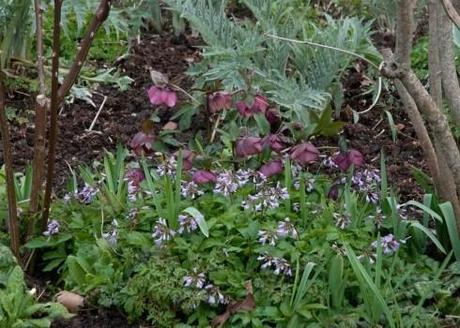
where layer upon layer of planting follows on in each area, providing a richness of changing plant combinations throughout the seasons. (Above is a purple Hellebore planted with the delicate Cardimine quinquefolia and with Cynara cardunculus emerging behind.) Fergus’ desire and enthusiasm for experimentation is infectious and many ideas can be taken away or scaled down to use in smaller gardens too.
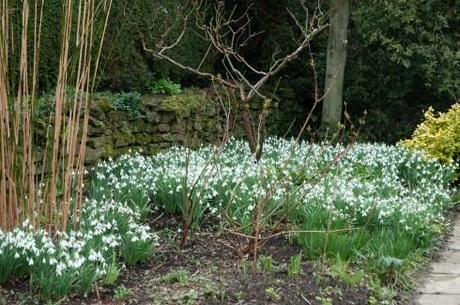
Designing borders in petite London gardens that will provide year round interest can be challenging, but underplanting deciduous shrubs and trees with spring bulbs is a useful idea to take away as is choosing the right cultivar of perennials for longer flowering. If you’re planting blue Geraniums, choose ‘Russell Pritchard’ or ‘Mavis Simpson’ which will flower for 3 months rather than the gorgeous ‘Johnson’s Blue’ which will sadly only put on a show for 3 weeks.

Another idea I’ll be putting into action this year is growing late flowering, not-too vigorous clematises into shrubs to provide late summer interest. I have a client where there’s lots of spring and early summer interest in the garden, but come late summer, the garden is missing any joyous splash of color. With not much room in the border to pop in an all singing all dancing Dahlia or two (or any other plants for that matter), viticella type Clematises growing into shrubs that have already flowered should add an extra layer of interest to the border, without smothering their host plants. I can’t wait to see how these Clematises fare later this year, hopefully delighting both myself and the client! Michael in the Great Dixter nursery, also gave invaluable advice, letting me know that these less blousy Clematis do not need to be planted as deep as their more showy summer flowering relatives (although it won’t hurt them either) and are less susceptible to Clematis wilt too. It’s a good time to get planting Clematises and the nursery have a good range of cultivars (and offer mail order too) if you have a bare spot that needs some late summer color. These Clematises also have an undemanding pruning regime, and can be cut back down to a foot or so (or left a bit taller if to grow into taller shrubs or trees) every spring.

Fergus explained that at this time of year, the gardens are looking at their tidiest with most winter stems cut down and beds mulched (and tickled), ready for the year ahead.

And it’s now that you can really see how the Yew hedges define and structure the gardens.
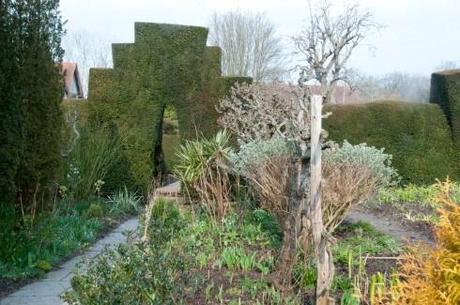
Fergus explained that they give a visual barrier to each garden, so that your eyes can focus on each distinct area and the planting is not diluted. And as the gardens wrap themselves around the house, so the hedging creates more intimate spaces where the planting experimentation continues.
I’m really looking forward to going back to Great Dixter at the end of April, when hopefully the next layer of planting will be coming through (although it is still snowing today here in London!).
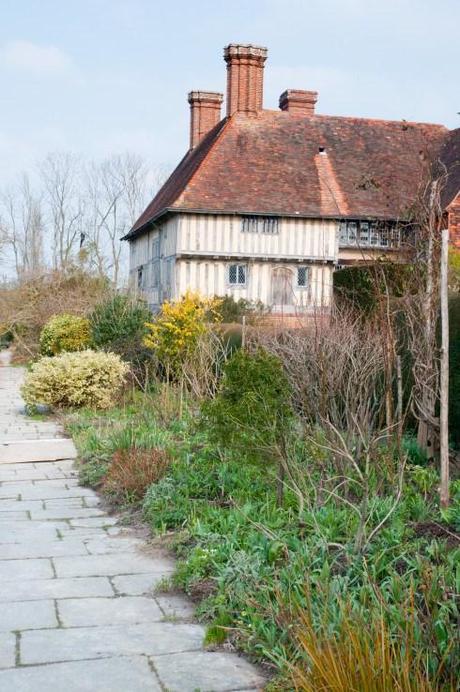
But here’s a quick taste of how the long border in spring,
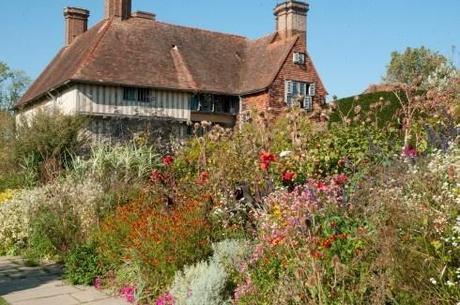
is transformed into glorious colours and textures in summer (via Tulips and many other plant combinations in between),
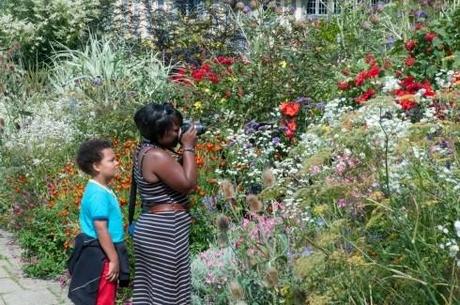
(and here just to give you the scale and depth of the planting),
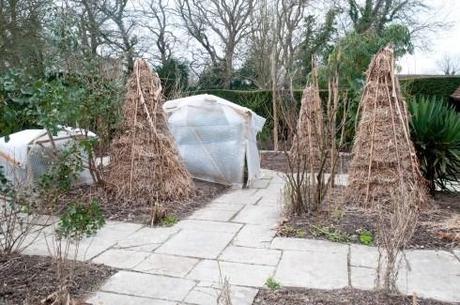
and how these sculptural pyramids in March,
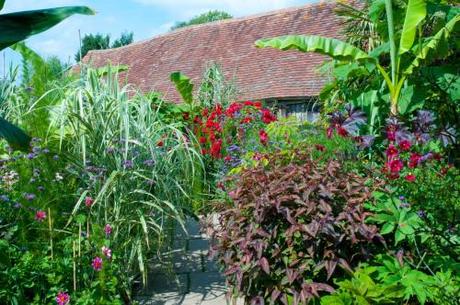
will develop into this exotic paradise come late summer. If you fancy learning more at the gardens, there are many courses running throughout the year including successional planting, meadow planting, monthly visits around the gardens and propagation days. The gardeners at Great Dixter are so generous about sharing their knowledge, you certainly won’t be disappointed!
Here’s some great posts written by other enthusiastic bloggers from the day too:
Real Men Sow
Through the Garden Gate Great Dixter Part 1
Through the Garden Gate Great Dixter Part 2
